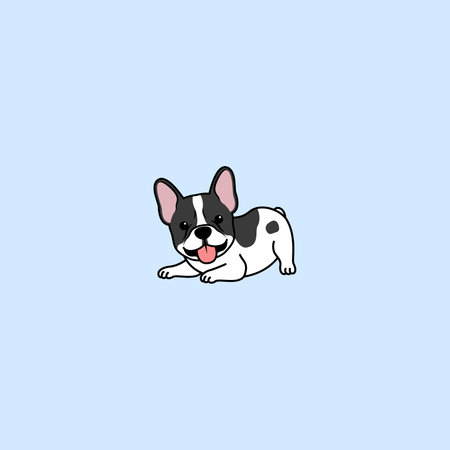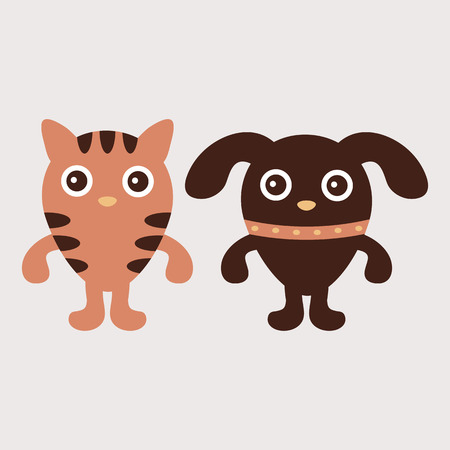1. Understanding Raw and Kibble Diets
When it comes to feeding your pet, two of the most common diet choices are raw food and kibble. Each has its own benefits and drawbacks, and understanding what they consist of can help you make the best decision for your furry friend.
What Is a Raw Diet?
A raw diet consists of uncooked ingredients such as raw meat, bones, organs, and sometimes fruits and vegetables. This diet aims to mimic what animals would eat in the wild. Many pet owners choose raw feeding because they believe it provides more natural nutrition and fewer artificial additives.
Common Ingredients in a Raw Diet:
- Raw muscle meat (beef, chicken, turkey, lamb, etc.)
- Organ meats (liver, kidney, heart)
- Raw bones (edible bones for calcium)
- Fruits and vegetables (optional)
- Eggs or dairy (sometimes included)
What Is a Kibble Diet?
Kibble is dry pet food made from processed ingredients that are cooked at high temperatures and then formed into small bite-sized pieces. It is designed to be convenient, nutritionally balanced, and easy to store. Many commercial kibble brands add vitamins, minerals, and preservatives to ensure a long shelf life.
Common Ingredients in Kibble:
- Meat meal or by-products
- Cereal grains (corn, wheat, rice)
- Vegetable proteins
- Additives (vitamins, minerals)
- Preservatives for extended shelf life
Main Differences Between Raw and Kibble Diets
The primary differences between raw and kibble diets lie in their preparation methods and nutritional content. Below is a comparison table highlighting key distinctions:
| Raw Diet | Kibble Diet | |
|---|---|---|
| Nutritional Content | High in protein, natural enzymes, and moisture | Balanced with added nutrients but lower in moisture |
| Shelf Life | Spoils quickly; needs refrigeration or freezing | Long shelf life; easy to store at room temperature |
| Preparation Time | Takes time to prepare meals properly | No preparation needed; ready to serve |
| Additives & Preservatives | No artificial preservatives; all-natural ingredients | Contains preservatives for longer storage life |
| Dental Health Benefits | Plaque reduction due to chewing raw bones | Kibble can help clean teeth but may leave residue |
| Cost | Tends to be more expensive due to fresh ingredients | A more budget-friendly option for most pet owners |
The choice between raw and kibble depends on factors like your pet’s health needs, lifestyle, budget, and convenience. Each diet has its own unique advantages, so understanding these differences can help you make an informed decision.
Health Benefits and Risks of Raw Feeding
Raw feeding has gained popularity among pet owners who believe it offers a more natural and nutritious option for their furry companions. While there are some potential health benefits, its essential to be aware of the risks as well.
Potential Health Benefits
Many pet owners who switch to a raw diet report noticeable improvements in their pets overall health. Some of the most commonly cited benefits include:
1. Improved Coat and Skin Health
A raw diet often includes fresh meats, bones, and organ meats, which provide essential fatty acids that can lead to a shinier coat and healthier skin. Pets on raw diets may experience reduced itching and fewer skin irritations.
2. Better Digestion
Raw diets typically contain fewer fillers and artificial ingredients than commercial kibble, making them easier for pets to digest. This can lead to smaller, firmer stools and reduced digestive issues such as gas and bloating.
3. Increased Energy Levels
Since raw food is less processed and closer to a pet’s natural diet, some owners notice that their pets have more energy and vitality after switching to raw feeding.
4. Cleaner Teeth and Fresher Breath
Chewing raw bones can help reduce plaque buildup, leading to better dental health and fresher breath compared to kibble-fed pets.
| Health Benefit | Description |
|---|---|
| Improved Coat & Skin | A shinier coat and healthier skin due to natural fatty acids. |
| Better Digestion | Fewer fillers result in easier digestion and firmer stools. |
| Higher Energy Levels | A more natural diet can lead to increased vitality. |
| Cleaner Teeth | Bones help remove plaque, promoting better oral health. |
Potential Risks of Raw Feeding
Despite the benefits, there are also some risks associated with feeding raw food that pet owners should consider before making the switch.
1. Bacterial Contamination
Raw meat can carry harmful bacteria such as Salmonella or E. coli, which can pose health risks not only for pets but also for humans handling the food.
2. Nutritional Imbalances
If a raw diet is not carefully balanced with the right proportions of meat, organs, bones, and other nutrients, pets may suffer from deficiencies or excesses that can lead to long-term health problems.
3. Risk of Bone Injuries
Poorly prepared raw diets may include bones that are too hard or splinter easily, increasing the risk of choking or internal injuries.
4. Higher Cost and Preparation Time
A balanced raw diet requires careful planning, sourcing quality ingredients, and safe handling practices—all of which can be time-consuming and costly compared to kibble.
| Risk Factor | Description |
|---|---|
| Bacterial Contamination | Presents risks for both pets and humans handling raw food. |
| Nutritional Imbalance | An improperly formulated diet can lead to deficiencies or excesses. |
| Bone Injuries | Poorly selected bones can cause choking or digestive issues. |
| Cost & Time | A proper raw diet requires significant investment in both money and effort. |
If youre considering switching your pet to a raw diet, its crucial to consult with a veterinarian or pet nutritionist to ensure they receive all the necessary nutrients while minimizing potential risks.

3. Pros and Cons of Kibble
Convenience and Affordability
Kibble is one of the most popular choices for pet owners due to its convenience and affordability. Unlike raw diets, kibble requires no refrigeration, preparation, or special handling. You can simply scoop it out of the bag and serve it to your pet, making mealtime quick and hassle-free. Additionally, kibble has a long shelf life, reducing food waste and making bulk purchasing more practical.
From a cost perspective, kibble is generally more budget-friendly than raw feeding. Many high-quality kibble brands offer balanced nutrition at a lower price point compared to raw diets, which often require sourcing fresh ingredients and supplements.
Concerns About Preservatives and Fillers
While kibble is convenient, some concerns exist regarding the use of preservatives and fillers in many commercial brands. To extend shelf life, manufacturers add preservatives such as BHA, BHT, and ethoxyquin, some of which have been linked to potential health risks in pets over time.
Fillers like corn, wheat, and soy are commonly used in lower-quality kibble to increase volume while keeping costs low. These ingredients may not provide much nutritional value and can contribute to food sensitivities or digestive issues in some pets.
Potential Health Impacts
The quality of kibble varies widely between brands. While premium options contain high-quality proteins and essential nutrients, lower-grade kibbles may rely on meat by-products and artificial additives. Some concerns about long-term kibble feeding include:
| Potential Issue | Description |
|---|---|
| Dehydration | Kibble contains low moisture content, which may contribute to dehydration if pets dont drink enough water. |
| Dental Health | Some claim that kibble helps clean teeth, but it may not be as effective as dental chews or regular brushing. |
| Allergies & Sensitivities | Certain ingredients in kibble (e.g., grains, artificial additives) can trigger allergies or digestive problems in sensitive pets. |
| Nutrient Processing | The high-heat cooking process used in making kibble can reduce nutrient availability compared to fresh foods. |
Choosing the Right Kibble
If you opt for a kibble-based diet, selecting a high-quality brand is crucial. Look for options with real meat as the first ingredient, minimal fillers, and natural preservatives like tocopherols (vitamin E). Grain-free formulas may be beneficial for pets with sensitivities, though they aren’t necessary for all animals.
Cost, Convenience, and Lifestyle Considerations
When choosing between raw and kibble diets for your pet, cost, convenience, and lifestyle factors play a significant role. Some pet owners prioritize budget-friendly options, while others focus on ease of feeding or the best nutritional benefits regardless of price. Lets break down these considerations to help you make an informed decision.
Comparing Costs: Raw vs. Kibble
The cost of feeding your pet depends on factors like brand, quality, and portion size. Generally, kibble is the more affordable option, while raw diets tend to be pricier due to higher-quality ingredients and specialized storage requirements.
| Diet Type | Average Monthly Cost (for a Medium-Sized Dog) |
|---|---|
| Kibble | $30 – $80 |
| Raw (Pre-Made) | $150 – $300 |
| Raw (Homemade) | $100 – $250 |
Convenience Factor
Kibble is by far the most convenient option for pet owners. It has a long shelf life, requires no preparation, and is easy to store. Raw food, on the other hand, needs refrigeration or freezing and often requires careful handling to prevent bacterial contamination.
| Diet Type | Storage Requirements | Preparation Time |
|---|---|---|
| Kibble | Pantry storage; lasts months | No prep needed; just scoop and serve |
| Raw (Pre-Made) | MUST be refrigerated or frozen | Slight thawing required before serving |
| Raw (Homemade) | MUST be refrigerated or frozen | Takes time to source ingredients & prepare meals |
Lifestyle Considerations
Your lifestyle also plays a key role in deciding which diet works best for your pet.
Kibble Fits Well If You:
- Have a busy schedule and need a quick feeding solution.
- Travel frequently and need a portable food option.
- Arent comfortable handling raw meat regularly.
- Prefer a budget-friendly diet with easy storage.
A Raw Diet Might Be Better If You:
- Aim for a more natural diet with fewer preservatives.
- Arent concerned about spending extra time preparing meals.
- Arent restricted by budget constraints.
- Aren’t worried about freezer space for storing raw food.
- Aren’t uncomfortable handling raw meat safely.
No single diet is perfect for every pet owner. Your choice should align with your budget, daily routine, and comfort level when it comes to food preparation. Understanding these factors can help you choose the right diet that keeps both you and your furry friend happy!
5. Making the Best Choice for Your Pet
Choosing between raw and kibble diets can be challenging, but the best choice depends on your pet’s specific needs, lifestyle, and veterinary recommendations. Every pet is unique, and what works for one may not be ideal for another. Here are some key factors to consider when deciding on the right diet for your furry friend.
Assess Your Pet’s Needs
Your pet’s age, breed, activity level, and any existing health conditions play a crucial role in determining the best diet. For example:
| Pet Type | Best Diet Considerations |
|---|---|
| Puppies/Kittens | Require high-protein, nutrient-dense food to support growth. |
| Senior Pets | May need joint-supporting nutrients and easily digestible food. |
| Active/Working Dogs | Benefit from higher protein and fat content to sustain energy levels. |
| Pets with Allergies | Might thrive on raw diets or limited-ingredient kibble. |
Consider Your Lifestyle
Your daily routine and ability to manage food preparation should also influence your decision. Raw diets require more time for meal prep, storage space, and safe handling practices to avoid contamination. On the other hand, kibble is convenient, has a long shelf life, and is easier to store and serve.
Consult Your Veterinarian
A veterinarian can provide valuable guidance based on your pet’s health history. If your pet has specific dietary needs or medical conditions, professional advice ensures they get proper nutrition without unnecessary risks.
Mixing Both Diets
If you’re unsure about committing fully to raw or kibble, some pet owners successfully combine both diets. This approach allows pets to enjoy benefits from each type while maintaining convenience for the owner. However, it’s essential to balance nutrients properly and introduce changes gradually.
Trial and Observation
No matter which diet you choose, monitor your pet’s weight, coat condition, digestion, and overall energy levels. If you notice adverse reactions such as digestive issues or allergies, consult your vet and adjust their diet accordingly.


